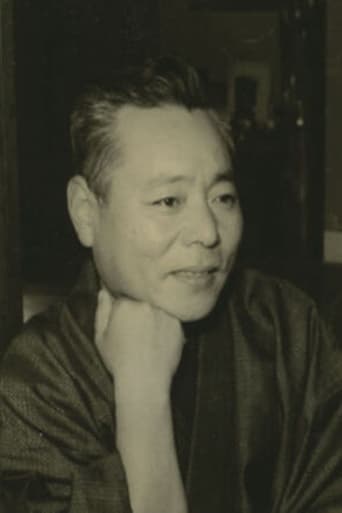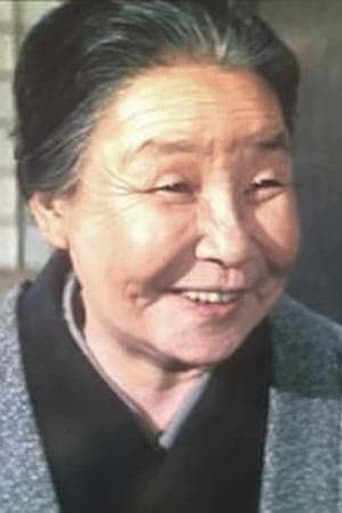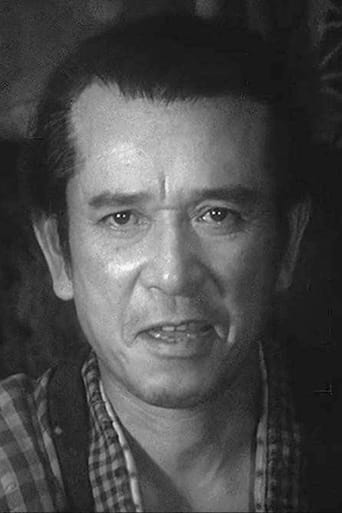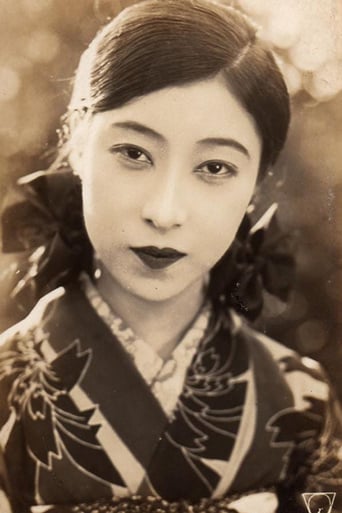Incannerax
What a waste of my time!!!
Boobirt
Stylish but barely mediocre overall
Ogosmith
Each character in this movie — down to the smallest one — is an individual rather than a type, prone to spontaneous changes of mood and sometimes amusing outbursts of pettiness or ill humor.
Keira Brennan
The movie is made so realistic it has a lot of that WoW feeling at the right moments and never tooo over the top. the suspense is done so well and the emotion is felt. Very well put together with the music and all.
Andres Salama
Warning: Some plot points are revealed in this reviewOne of the last silent films by Japanese master Yasujiro Ozu (later remade by Ozu himself in in color in 1959) is about a traveling kabuki troupe arriving to a small town in Japan. The troupe's leader, Kihachi (Takeshi Sakamoto) uses the occasion to meet his old lover and their grown son (who believes Kihachi is his uncle), but his current lover Otaka (pretty, ethereal Rieko Yagumo) does not appreciate this when she learns about it, so she convinces a fellow actress of the troupe to seduce Kihachi's son. Kihachi, obviously, doesn't react well either when he learns about this. Reportedly, Ozu based this film on an American film from 1928 called "The Barker".There are few differences from the 1959 remake. For instance, here the kabuki troupe arrives to a mountain town in a train, instead of arriving to a coastal village by boat. Secondary characters are less shown. But mostly, both films are very similar, almost scene by scene, including the famous part where they are shouting over each other across a rainy street or the finale with Kihachi and his now reconciled lover drinking sake in the night train. The actor playing Kihachi, though, is about two decades younger than Ganjiro Nakamuro in the 1959 version.Overall, this movie is not, in my opinion, as accomplished as the remake, but is still very well worth seeing, and one of the highlights of Ozu's silent films.
Cosmoeticadotcom
Yasujiro Ozu was perhaps the greatest obsessional filmmaker in history. Thus, it's no surprise that not only did he rework the same themes over and again in his films, but that he also redid earlier films of his own years later, such as 1932's I Was Born But... as 1959's Good Morning. The most famed examples of this trait are 1934's silent black and white A Story Of Floating Weeds (Ukikusa Monogatari), written by Ozu and Tadao Ikeda, and 1959's sound color film, Floating Weeds (Ukigusa), written by Ozu and Kôgo Noda. Both films, whose titular metaphor revolves around the lives of itinerant actors, tell basically the same tale, in slightly different ways, with differently named characters. They follow the ups and downs of the leader of a really bad theater troupe, on its last legs (not unlike the characters from Federico Fellini's first film, Variety Lights), who lands in a town and visits an old girlfriend who bore him a son. In both films, the son believes his father is really his uncle, and the major development in the films is how the father's jealous actress girlfriend tries to sabotage things by having a pretty young actress seduce the son, thus recapitulating the father's key moment in life, one the father believes ruined his chance at stardom and happiness.If one is thinking that this is the stuff of pure melodrama, it is. But that's true only on the surface. This is where depth and execution of an art come into play. It also abnegates claims that Ozu eschewed plot in his films for melodrama is about nothing if but plot. While it's true he did not strive for A to B to C narratives, and preferred 'organic' story growth, the fact is that all his films had plots, and good ones. But they were not plot driven, nor dependent upon the heavyhanded machinations most drama and films rely upon. The difference between having a plot and being plot driven is something most critics seem to not understand. Ozu simply removes the superfluous plot moments and adds contemplative, poetic, and metaphoric shots in their place, what are termed 'pillow shots.' The emphasis is thus not on the driving, but the driver, of plot. After all, the tale of a parent who has a long lost child is not fresh, although the way it's told can be.As for the films, the earlier one is actually the slightly better film, mostly because it's more concise- clocking in at 86 minutes vs. the two hour remake….In defense of the later film, it has more humor (one character from the troupe claims his name is Toshiro Mifune- the great star of so many Akira Kurosawa films; a nod to Ozu's rival), and the son's reaction to the news about his father seems a bit more mature and realistic than in the earlier film, while the mother seems more resigned to her lover's leaving, rather than being devastated- as in the earlier film. But the ending of the earlier film, on the train, is better, for when we see the troupe leader reunited with his love, and see the sleeping child, the earlier film leaves no doubt that the leader is wistfully thinking of his son, while the later film does not. Another plus that the later film has is its use of color and symbolism, which is far more striking. The opening scene contrasts a lighthouse in the background with a foregrounded bottle. It is a stunning visual image, and such phallic symbols abound in the film, as bottles are repeatedly seen, and there is a scene where the local prostitutes tease the male troupe members as they suck on popsicles. We then see the lighthouse from other perspectives over the course of the film. The earlier film is not set at a seaside town, but in a rural area, and the scene of the father and son fishing is superior in the later film, for there is no oddly stylized synchronization of the pair tossing their fishing lines into the river, over and again, as in the 1934 film, and what the duo speak of- their views on the father's approach to acting, is far more cogent than in the silent version, whose major moment is when the father drops his wallet into the running water. The later version also mimetically puts the father and son in the position of the bottle in relation to the lighthouse at the film's opening. What this means, from a phallic perspective, is open to several interpretations. Another major difference between the two films is that the earlier film has more motion in it- literally. It was made before Ozu got caught in his tatami mat point of view mode, and therefore the emotion of the drama is recapitulated better in the earlier, more kinetic, film….Both A Story Of Floating Weeds and Floating Weeds are proof that not all obsessions result in negativity, a thing one might remind oneself of the next time someone speaks ill of that trait. They are also fine examples of what made Yasujiro Ozu a great artist, even if the art in them might fall just a bit shy of overall greatness. Viva obsesión!?
Michael_Elliott
Story of Floating Weeds, The (1934) ** 1/2 (out of 4) A traveling actor returns to a town where his his old flame lives, which causes complications with his current girlfriend and the son who doesn't know he's the father. This was my first film by Yasujiro Ozu and I'm really not sure the reputation this one has over the remake but this here really didn't work for me. The story never fully grabbed my attention and I must say that some of the dialogue was pretty lame, although I've heard some Japanese words don't translate very well to English so perhaps this had something to do with it. The visual style of the film is really the only thing that kept me awake. The stark photography and lush blacks really look terrific and the simple direction also works well.
paybaragon
This film is full of the sensitive observation, the slow-building tragic emotion and the moral ambiguity of Ozu's later works. While eschewing the cheap tragedy that was already so fashionable in Japanese melodrama (you can imagine the story going in that direction for any other director), the ending leaves the viewer uncertain and unsettled, with only the vaguest hopes for all concerned. Apart from the depiction of a rundown and pathetic acting troupe (it reminds me of Alan Mowbray's drunken Shakespearian actor in 'My Darling Clementine'), and the rural small-town atmosphere, what lingers on in the mind is the portrait of an extremely flawed man. Like the great male characters of American cinema, Ichikawa is decent but ruled by anger, regret, and a certain way of life. will Ichikawa ever really be able to change, or do justice to those he feels responsible for? But after all, actors will be actors...In fact, if this film is to be criticized for anything, it should be done so for its lack of a really detailed look into the lives and profession of the actors. After all, Ichikawa's profession turns out to play such an important part, in the end, in the fate of his 'family'.Ozu's direction of women (particularly Ichikawa's wronged, but vengeful, lover) is sensitive and truthful, while his his direction of children is, as always, well-observed and hilarious.





